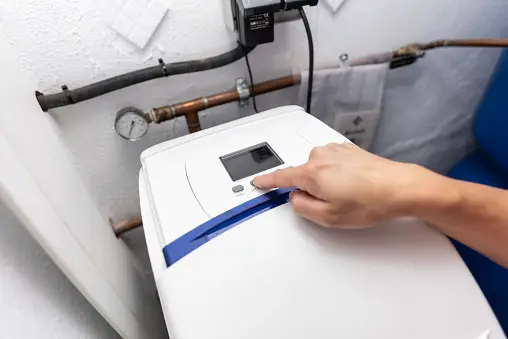Guide to Getting a New Water Softener in 2024

A water softener can be a game-changer for households grappling with hard water problems. As we navigate 2024, breakthroughs in technology and design have entered the market, offering a plethora of options.
Water softeners are filtration systems that remove minerals like calcium and magnesium from hard water. These minerals can cause damage to your appliances, pipes, and fixtures. They also create soap scum and leave stains, making it difficult to clean.
In our 2024 guide, we’ll dive into the ins and outs of finding the perfect water softener for your home. Check out this article on what you can expect in terms of the average water softener cost.
Salt-based ion exchange softeners
These traditional water softeners use sodium or potassium ions to replace hardness-causing minerals in the water. The systems operate by cycling household water through separate tanks: one filled with brine and one filled with resin beads.
Salt-based ion exchange softeners work through a cycle that alternates between softening the water and regenerating the resin beads. During the softening phase, hard water passes through the resin tank, where calcium and magnesium ions are changed with sodium or potassium ions from the resin beads.
Once the beads are saturated with hardness minerals, the system enters a regeneration phase, where the brine solution from the brine tank cleanses the beads by exchanging the hardness ions with sodium or potassium ions, preparing them for the next cycle.
While these water softeners are highly effective at softening water, it’s important to note that they require regular maintenance and occasional salt replenishment to ensure optimal performance and longevity.
Salt-free water conditioners
Often referred to as descalers or water conditioners, these systems are specifically designed to treat hard water by altering the chemical structure of minerals, effectively preventing them from depositing scales and causing issues.
Unlike traditional water softeners that rely on salt-based processes, salt-free water conditioners offer a more sustainable solution. By not removing minerals from the water, they are a suitable choice for individuals who are conscious of their sodium intake.
Additionally, these eco-friendly alternatives not only provide effective water treatment but also produce no waste, making them an environmentally responsible and sustainable option for water conditioning and overall water quality improvement.
Dual-tank water softeners
When it comes to guaranteeing a consistent supply of uninterrupted soft water, dual-tank softeners truly shine. These sophisticated systems operate by utilizing two tanks, allowing for a continuous flow of softened water. While one tank is regenerating, the other tank seamlessly takes over the duty of supplying soft water.
This unique design not only provides convenience but also proves to be highly advantageous for larger households or those with high water usage. Although dual-tank softeners may require a bit more space and initial investment, their ability to offer a constant supply of soft water makes them an excellent choice for those seeking unmatched convenience and reliability.
Magnetic water softeners
Magnetic water softeners, also called electronic or magnetic descalers, function on the premise that magnetic fields alter the electromagnetic nature of calcium and magnesium ions present in hard water.
When water passes through the magnetic field that’s created by these softeners, the properties of these hardness ions are changed so that they remain in suspension rather than crystallizing and clinging to surfaces as scale.
This process does not remove the minerals from the water; instead, it simply modifies their form, allowing them to flow with the water and thus reduce scale buildup.
The advantage of this type of water-softening technology is that it is chemical-free, requires no salt, and is entirely maintenance-free, offering a non-intrusive and cost-effective way to protect plumbing and appliances from the negative effects of hard water.
Moreover, the installation process is remarkably straightforward as these systems can easily be clamped onto the existing plumbing infrastructure.



